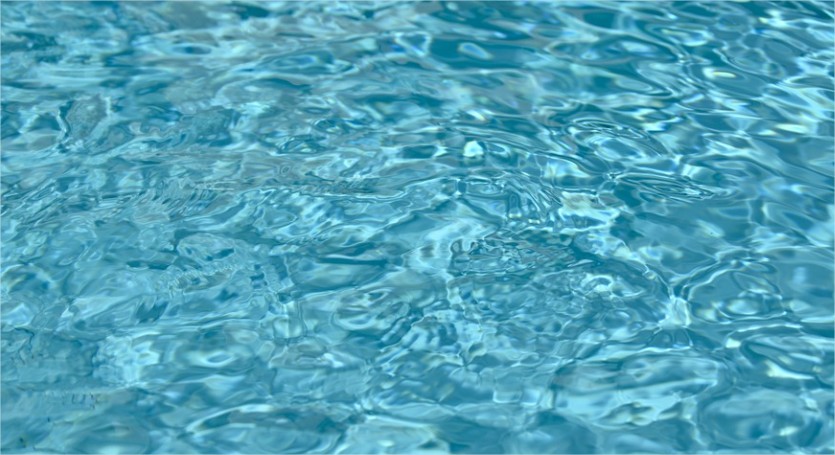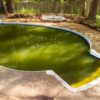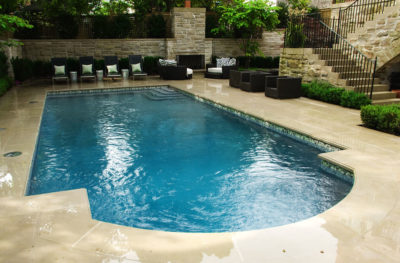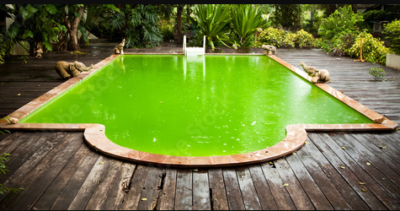Swimming pools add to the beauty of your home and are great for recreational activities, especially in the summers when you can just forget about the scorching heat and dive into your pool. However, with swimming pools comes maintenance. Having a water leak in your swimming pool is the worst problem people associate with having swimming pools on their property.
If you’re a beginner in swimming pool maintenance, you need adequate knowledge in swimming pool maintenance matters to make sure nothing bothers you. The worst thing that can happen to your swimming pool is a water leak through its structure or pipeline. However, with sufficient know-how, you’re as good as any expert swimming pool owner.

Today, in this guide, we will be gearing you with the knowledge necessary for water leak detection in a swimming pool. We’ll walk you through different swimming pool leak detection techniques and tell you how you can fix them. So, sit back and relax as we enlighten you with the knowledge and expertise a swimming pool person needs!
What Is Causing the Water in My Swimming Pool to Leak?
Water leaks in a swimming pool can occur anywhere inside or outside your pool. Before going knee-deep into the process of fixing the leak in your swimming pool, you first need to know the location of the water leak. If you find that there’s a leak in your swimming pool, it might be due to one of the following reasons.
- Motor problems and pumps might cause the water in your swimming pool to leak.
- Usual wear and tear on your swimming pool’s surface can cause your swimming pool to leak.
- You might be dealing with a broken pipeline, due to which the swimming pool water might be seeping into the ground. You can usually identify this problem if there’s a musty smell or algae growth near your swimming pool.
- Loose fittings on tiles, railings, and other swimming pool accessories.
- You might have an illusion of having a water leak in your swimming pool due to your water levels lowering down because of plain old evaporation.
Water losses due to evaporation are normal!
Swimming Pool Leak Detection Guide for Homeowners / Evaporation is a common phenomenon; even middle school children are aware of it! Before looking for a way to fix your swimming pool leak, make sure you are certain that the water loss is not due to evaporation.
If the drop in the water levels of your swimming pool is due to evaporation, there’s little you can do about it, so it would be best if you come to terms with it! A basic rule of thumb is that if you lose more than 1/4 inch of water each day, you’re probably dealing with a leak. This would result in a weekly water loss of 1.5 inches, which is on the high end of the scale. While a 1/4-inch leak indicates a problem, 1/8-inch evaporation is deemed normal.
Signs that your swimming pool might be leaking
If you’ve had experience with swimming pools on your property, you must know when your swimming pool is leaking. Homeowners with little experience of maintaining swimming pools can watch for the following signs to know that their swimming pool is leaking.
1. Cracks in the structure of your swimming pool
Cracks that are visible usually begin with cracks that are barely visible to the naked eye. If you’ve started seeing cracks in your swimming pool’s structure, you might have a leak in your swimming pool.
2. Losing more water than set evaporation levels
If you are losing water that is more than the above-mentioned evaporation levels, you are most likely to have a leak in your swimming pool.
3. Air in the system
You have a faulty filtration and pumping system if you see bubbles coming out of them.
4. An uneven deck
If you have an underground leak, your swimming pool’s deck is most likely to sink or lift. If you have a sinking or a lifting deck, you might have a leakage problem to deal with.
5. Having to add water to your swimming pool every now and then
This is the most easily read sign if you have a leakage inside or outside your swimming pool. If you’re filling in your swimming pool with water more frequently than ever, you have a water leak.
Identifying Swimming pool leaks
There are quite a few techniques that can help you with water leak detection in a swimming pool.
Using Ink
For this method of detecting water leaks inside (or outside) your swimming pools, you must gear yourself with the following items.
- Leak finder ink. If you can’t find that, you can always use plain old food colorings to do the job for you.
- A pair of anti-fog, leak proof goggles.
- A snorkel
1. the surface Around your swimming pool for dampness
You know that you have a water leak inside or outside your swimming pool if the walls and ground surrounding it are wet. You might see a puddle of water near the area where the water is leaking from. This will help to determine where the problem actually lies. Once you find the area, you know the location of your culprit.
2. Using the dye to find the leak
Now that you know where the water is leaking from, pour the dye near the wall adjacent to this region. It might do well if you jump into your swimming pool first before squirting the dye. This is because if you jump in later, you might disturb the water flow, and the dye will spread to every place other than the location of your leak – you don’t want that.
Once you’ve poured the dye near the suspected location, you’ll find that your dye swiftly moves towards the source of the leak. And there you have it – swimming pool leak detected!
If you think that your water leak is at the bottom of your swimming pool, follow the same process. However, do remember to wear your goggles before going underwater!
The Bucket Method
For this technique of water leak detection in your swimming pool, you will need:
- A plastic bucket of at least 5 gallons.
- A waterproof marker or duct tape.
1. Putting the bucket in motion
First, you need to turn off the water pump and place an empty plastic bucket on the second step of your pool. Next, fill the empty bucket with the water from your pool and mark the water level inside your bucket with a permanent marker or duct tape.
2. Wait!
After marking the current water level, wait for at least 24 hours. Now’s the time you compare the level of water in your swimming pool with the level of water in your bucket. If you find that both the water levels have gone down by the same amounts, it’s most probably due to evaporation, and you don’t need to fret over it.
On the contrary, if the fall in water levels of your swimming pool is greater than that inside your bucket, you most likely have a leak, and it’s time to address that problem!
3. Gaining more insight
If you’re sure about the source of your leak yet, now’s the time to redo the process mentioned above, this time with the water pump still running. If the water loss inside your swimming pool is more than that inside your bucket, even with the water pump working, you have a leak in the plumbing of your pool.
Fixing a pool leak
Pool leaks can be a nuisance; however, they’re not impossible to deal with. Homeowners can use the following techniques to fix water leaks in their swimming pools.

Vinyl Repair Kits
Vinyl repair kits can be used to fix water leaks in your swimming pool in no time. Vinyl repair kits come with a clue or transparent vinyl to fix water leaks.
- Cut them out in the shape of a huge circle, making sure it’s bigger than the leak’s area. Using a bigger circle means that you’ll be able to pull it easily, making up for its lack of corners.
- Cover the whole backside of the patch with the adhesive included with the kit. Apply the patch to the leak spot if you aren’t underwater. Apply pressure for two minutes to allow it to settle.
- Fold the patch in half if you don’t want the adhesive to come into touch with the water. To locate the source of the leak and open it up with one fast action. Apply pressure on the patch and hold it in place for about 5 minutes – you’re done!
Seeking Professional help
There’s no shame in asking for professional help to help you with water leak detection and fix those water leaks inside your swimming pool. Patching a pool can be an arduous task, and not everyone can do it. Professionals possess the right tools and skills to fix your water leaks in no time.
It’s also better to leave the maintenance to them — repairing a leak may not appear to be harmful, but it may be. An accidental fall might result in fractured bones. In fact, pool falls are one of the most common causes of unintentional death!
Other ways to patch your pool
If your pool is made of pure concrete, and you see cracks in the concrete, you can easily fill these gaps using pool plaster. Sometimes you might want to consider fixing your plumbing and replacing other accessories that are causing the leak.
There might also be a problem with your O-ring. If that’s the case, you can easily replace it.
Happy Fixing
As you must have realized by now, maintaining a swimming pool can be a full-time duty. This duty gets even more time and effort-consuming if you’re dealing with a swimming pool leak. However, if you identify a water leak in your swimming pool on time, you can save yourself from a lot of extra grunt work. Be sure to ask for professional help if you’re in dire need of it!

FAQs
How can I tell where my pool is leaking?
Listed below are common signs of a leaking swimming pool:
- Dropping water levels that are greater than those caused by evaporation.
- Cracks in the tiles and walls of your swimming pool.
- High water bills.
- Wet spots in your yard are accompanied by a musty smell and algae growth.
How much does it cost to detect a leak in a pool?
If you’re hiring a professional to detect and fix a leak in your pool, pool water leak detection services might cost anything from $100 to $500. Minor patch jobs may be included in the detection pricing by professionals. However, major repairs require a separate bid.
Does homeowners’ insurance cover pool leaks?
Your homeowners’ insurance would not cover a pool leak or any resulting losses unless the leak was caused by a danger such as a fire or a destructive windstorm. This is due to the fact that homes insurance does not cover any damage caused by a lack of maintenance or normal wear and tear.

Why is my inground pool losing an inch of water a day?
If you’re losing more than half an inch of pool water each day, you’ve got a leak in your pool’s construction or pump system. A comprehensive leak examination should be requested from your pool service. At this time, you might not be able to keep up with the replenishing of your pool.
How often should you have to add water to your pool?
A reasonable rule of thumb for covered pools is that they should not need to be refilled more than once every two weeks.
How do I know if my pool skimmer is leaking?
Shut off the pool pump and place a few drops of red food coloring around the skimmer to find the source of the leak. The coloring should be able to flow into the skimmer. If it seeps into the seams surrounding the skimmer, it’s the skimmer that’s leaking.
SOURCE :





